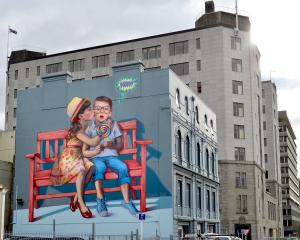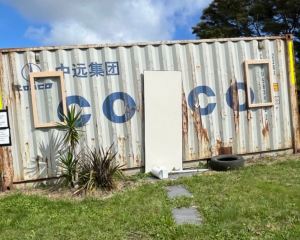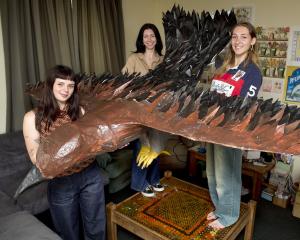In this week's Art Seen, James Dignan looks at exhibtions from Milford Gallery, Mint Gallery, and Inge Doesburg Gallery.
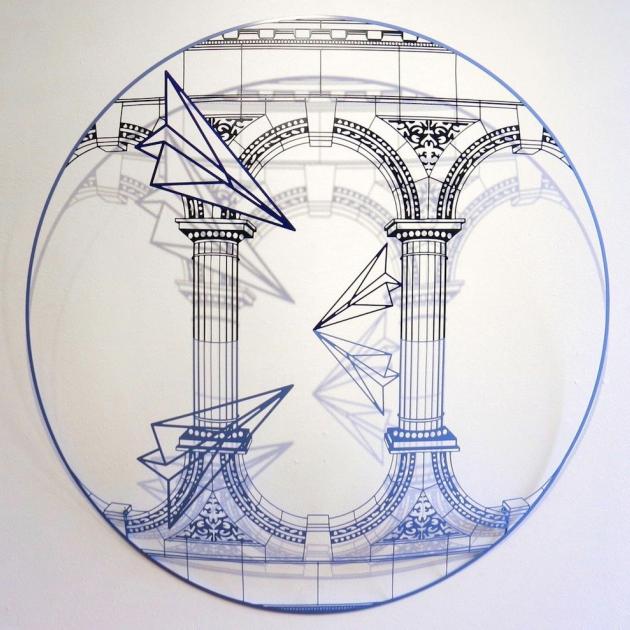 Reflections — Darts, by Neil Dawson.
''Reflections'', Neil Dawson (Milford Gallery)
Reflections — Darts, by Neil Dawson.
''Reflections'', Neil Dawson (Milford Gallery)

Neil Dawson shows his playful side in a series of metal hangings which become something of a self-made retrospective.
Dawson is best known for his large-scale public sculptures, such as the ball of ferns which hovers above Wellington's Civic Plaza, and the giant Chalice in Christchurch's Cathedral Square.
Dawson's work, however, is also to be found on a more personal scale, and he has had numerous exhibitions at the Milford over a large number of years. In his latest exhibition, he literally presents his works within the gallery, by creating frames representing the architecture of Milford House's facade.
The classical colonnade becomes the central motif in these works, bringing the gallery space recursively into itself. Upon the columns, the artist places representative themes from his earlier work - Mandelbrot flights of birds, willow-pattern crockery, thorny haloes, and paper darts.
In one memorable work, a stylised representation of Milford Sound floats within its own frame against the columns, as if we are viewing a large landscape on the gallery wall through the Milford's front windows.
The circular forms are bowed, allowing shadows to form behind them; as is often the case with Dawson's art, the interplay of shadow and metal is an integral part of the works' appearance.
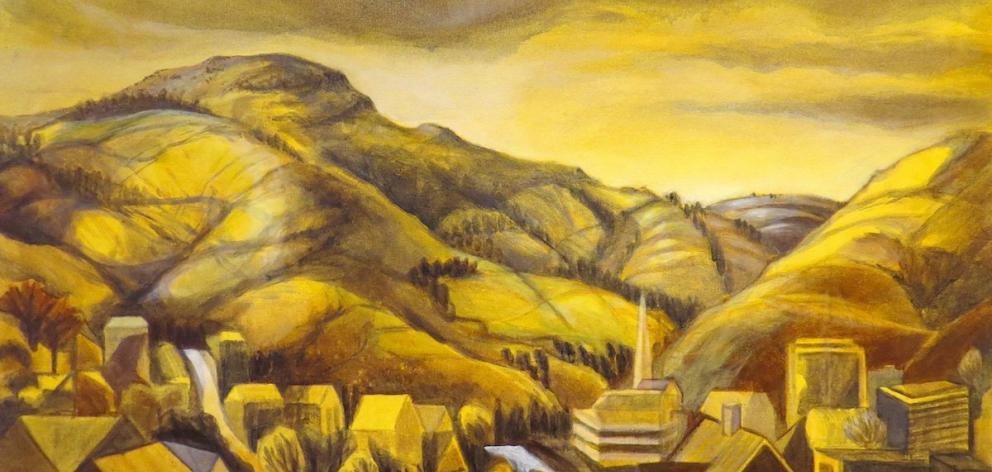 Town Hills, by Becky Cameron
''A Cure for Restlessness'', Becky Cameron (Mint Gallery)
Town Hills, by Becky Cameron
''A Cure for Restlessness'', Becky Cameron (Mint Gallery)

During the early part of this year, Becky Cameron walked the South Island stretch of the country-spanning Te Araroa trail, starting in the Marlborough Sounds and arriving at Bluff several months later.
During her journey, she created an art journal in the form of strips of drawing, blending one scene into the next to create an artistic spool of images which form something of a definition of the South Island countryside.
Individual sections were created en plein air as the scenery presented itself, occasionally modified by nature as raindrops bled into the watercolour. These images form the basis of her exhibition, ''A Cure for Restlessness''.
Alongside these images sit several individual landscapes created upon the artist's return to Dunedin, and it is interesting to compare the different approaches taken in these two sets of work. There is a freshness and vitality to the Te Araroa watercolours, yet the post-walk paintings are more redolent of warmth and mood.
In part, this is because of the different medium (acrylic or gouache versus watercolour), but even so, the artist has captured completely different feelings in the two series of paintings. This is particularly noticeable in the accurately titled Magic Path, in watercolour and ink over an old map, and in the rich sombre colours of the Winter Blues landscapes.
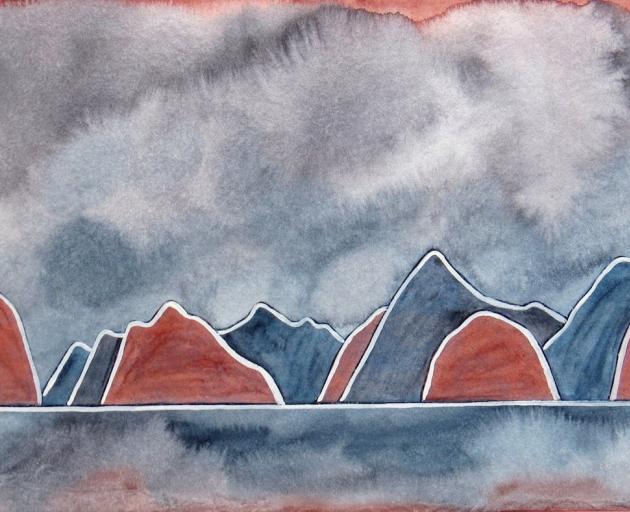 Going Through Fiordland — Doubtful Sound, by Marilynn Webb
''Marilynn Webb'', Marilynn Webb (Inge Doesburg Gallery)
Going Through Fiordland — Doubtful Sound, by Marilynn Webb
''Marilynn Webb'', Marilynn Webb (Inge Doesburg Gallery)

Inge Doesburg Gallery is presenting an impressive display of works by one of Dunedin's best-known artists, Marilynn Webb.
The works, from the 1980s to the 2000s, range across several of the artist's most familiar themes, creating a fine cross-section of the artist's oeuvre. If there is a connecting theme it is that they are all infused with a deep-rooted sense of connection with the land.
Webb's images study the interconnectedness of sky, water, and earth. The display consists predominantly of landscapes, and it is no surprise that the two works which are not also explore this connection. One shows human and plant shadows form together upon water, and the other presents a poem by Cilla McQueen describing the flow of a river.
The majority of pieces are light and airy, with only one of Webb's black images present. The works are attractive, consisting of linocuts over which watercolour has been added, producing shifting blooms of air and river over the solid forms of the land.
The resulting scenes, especially those where the palette is limited to earthy browns and shades of blue, are strong impressions of the country, and reach their height in pieces such as the artist's Going Through Fiordland works and a bold image of the Pomahaka River.








